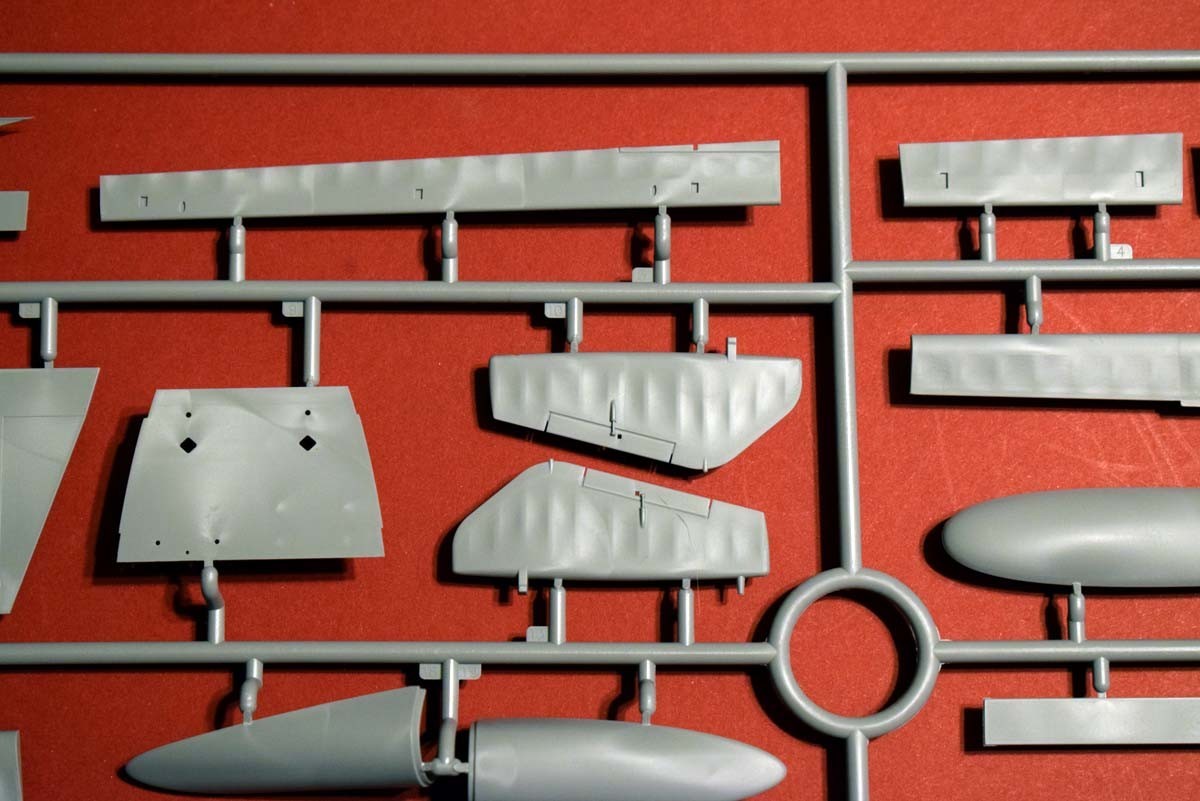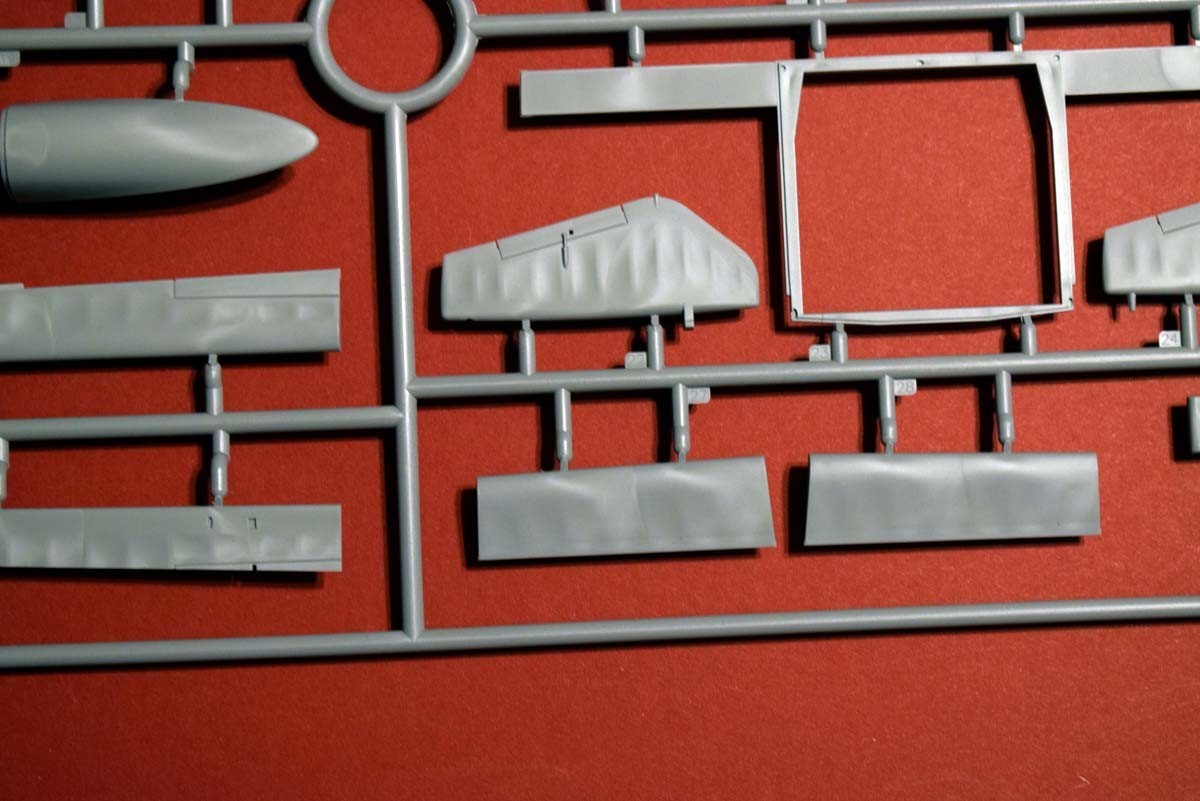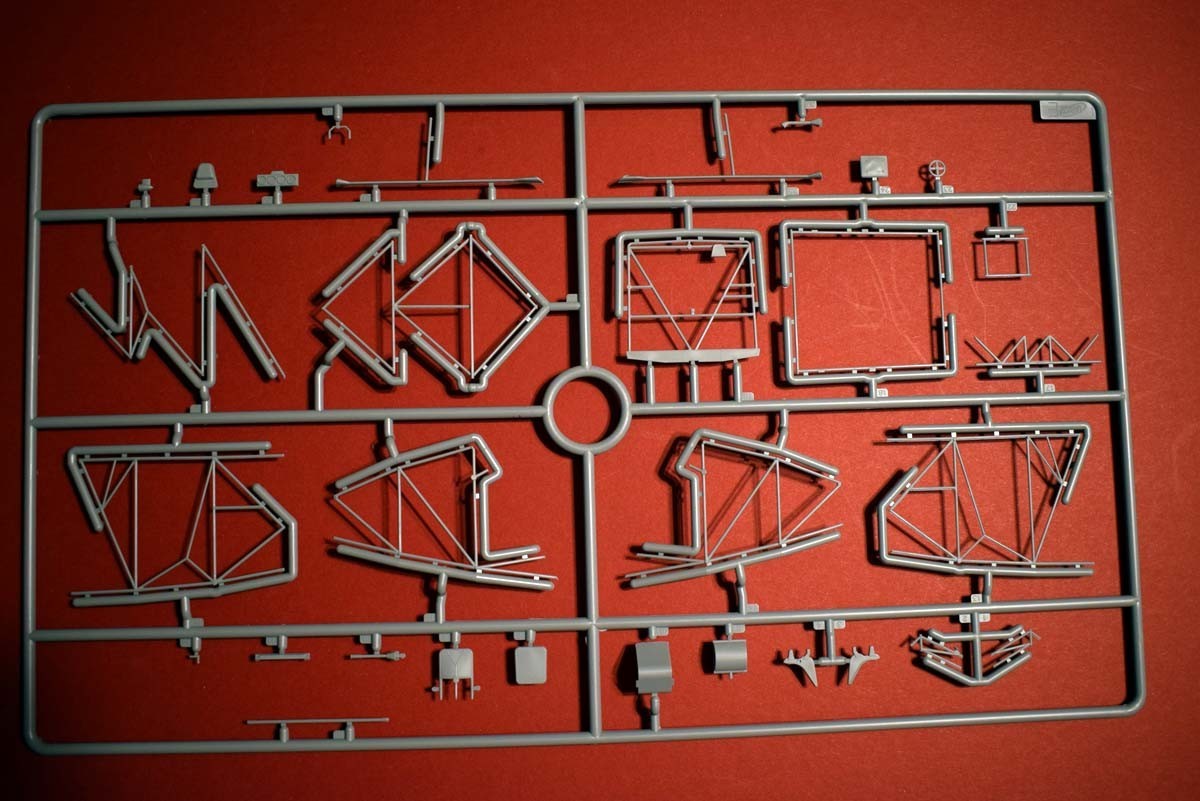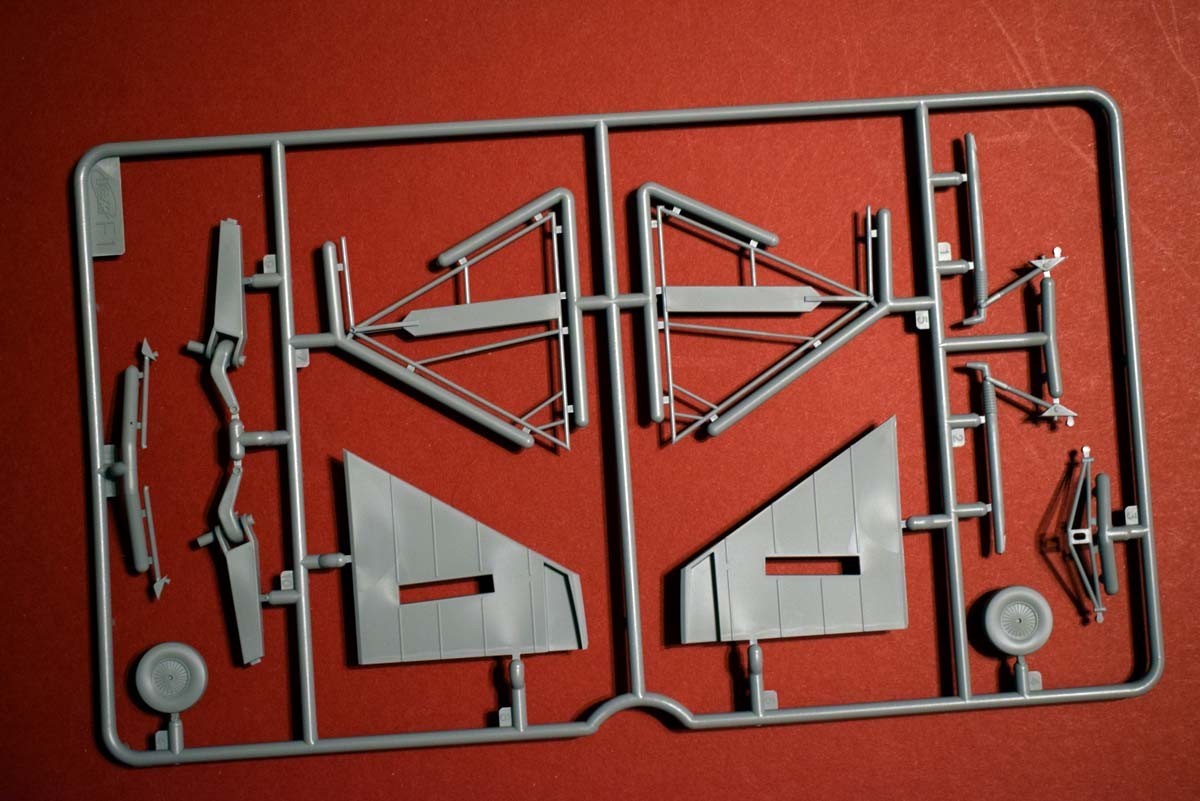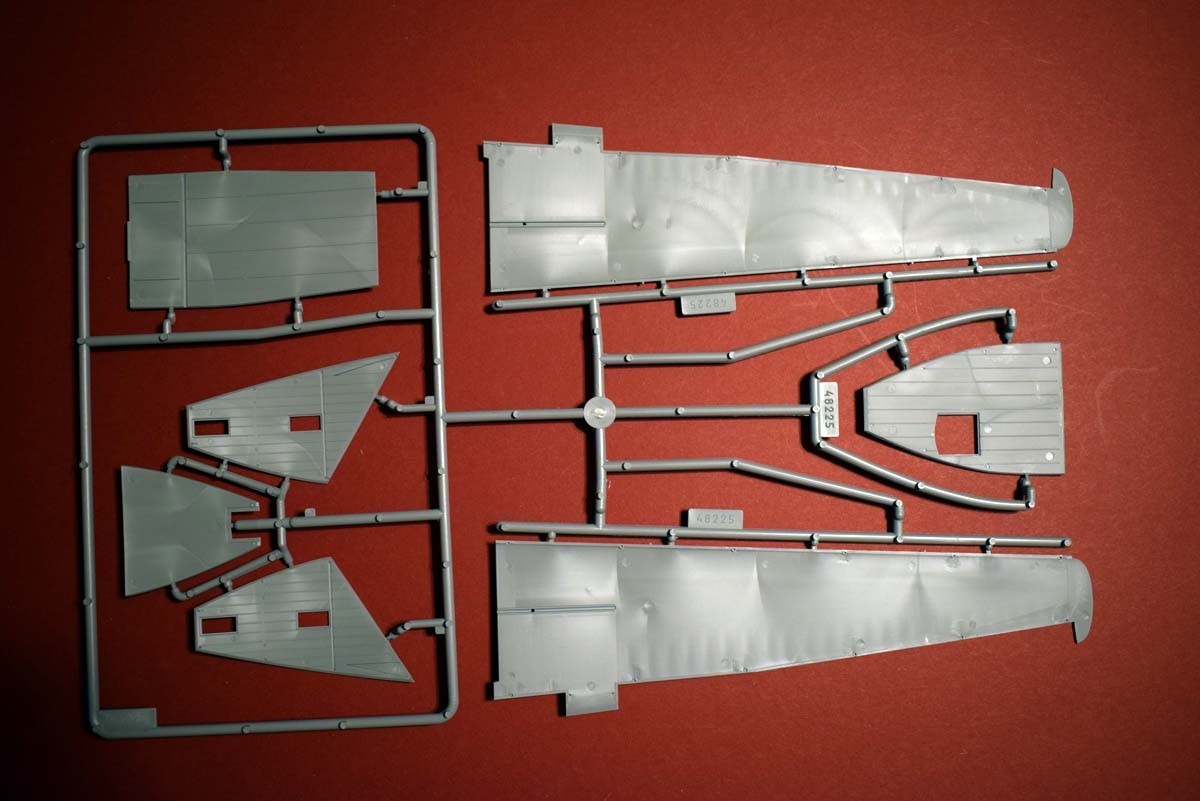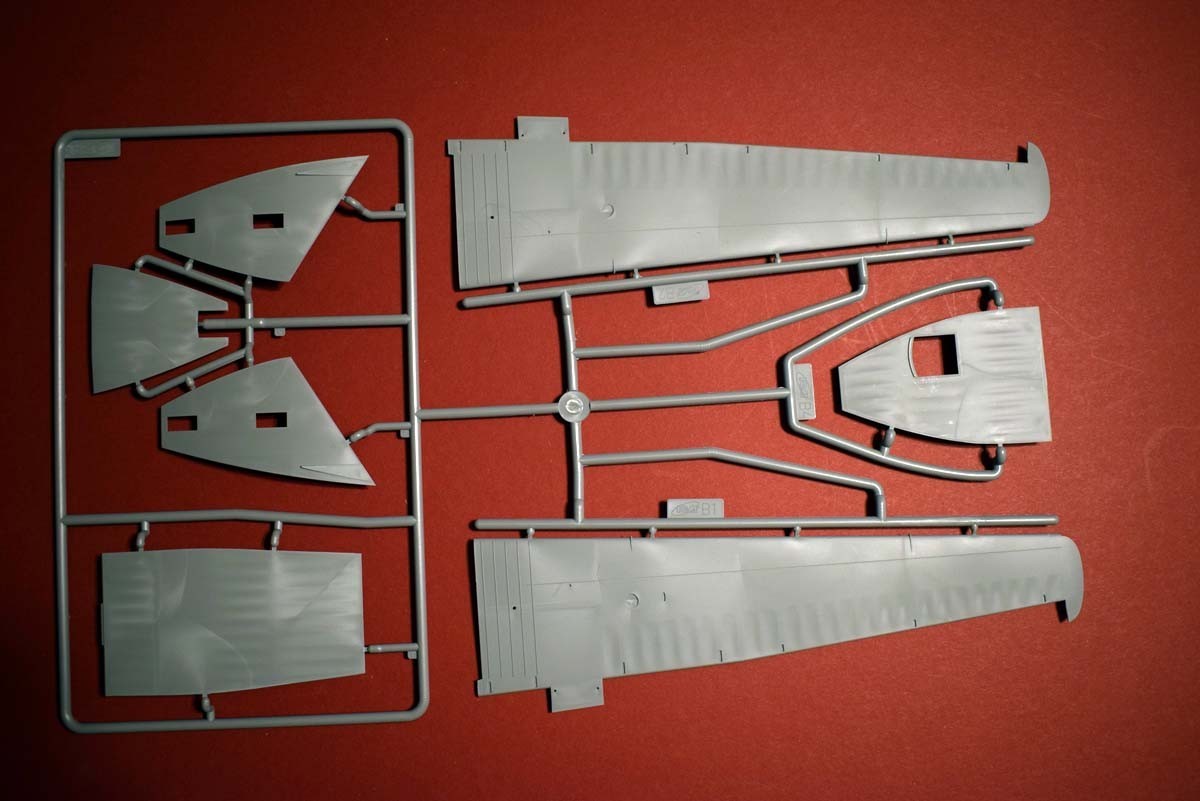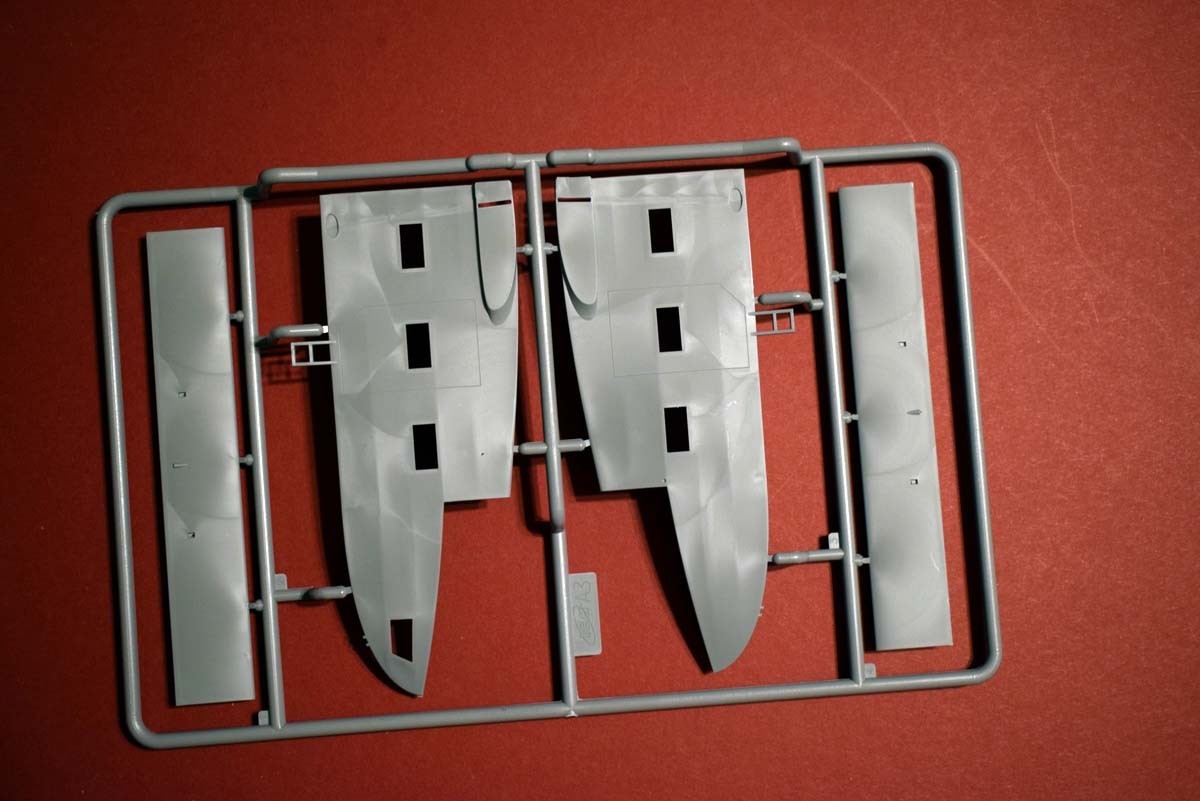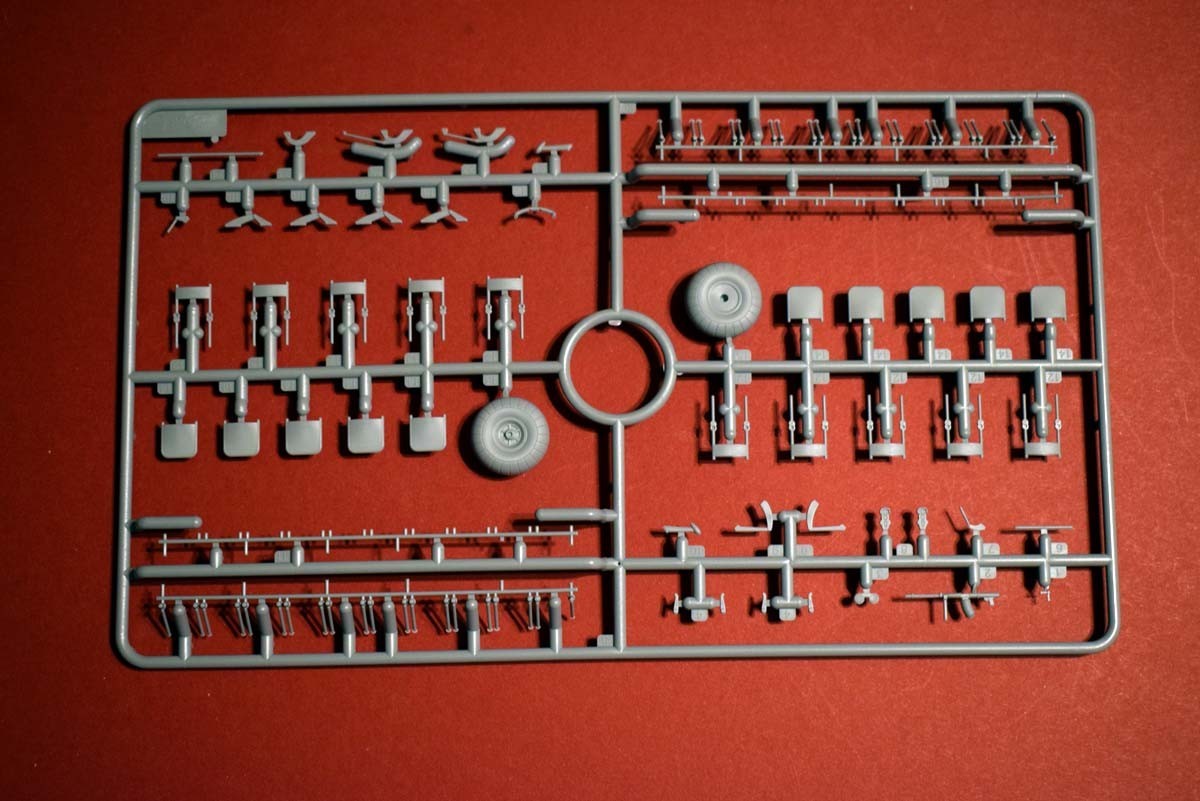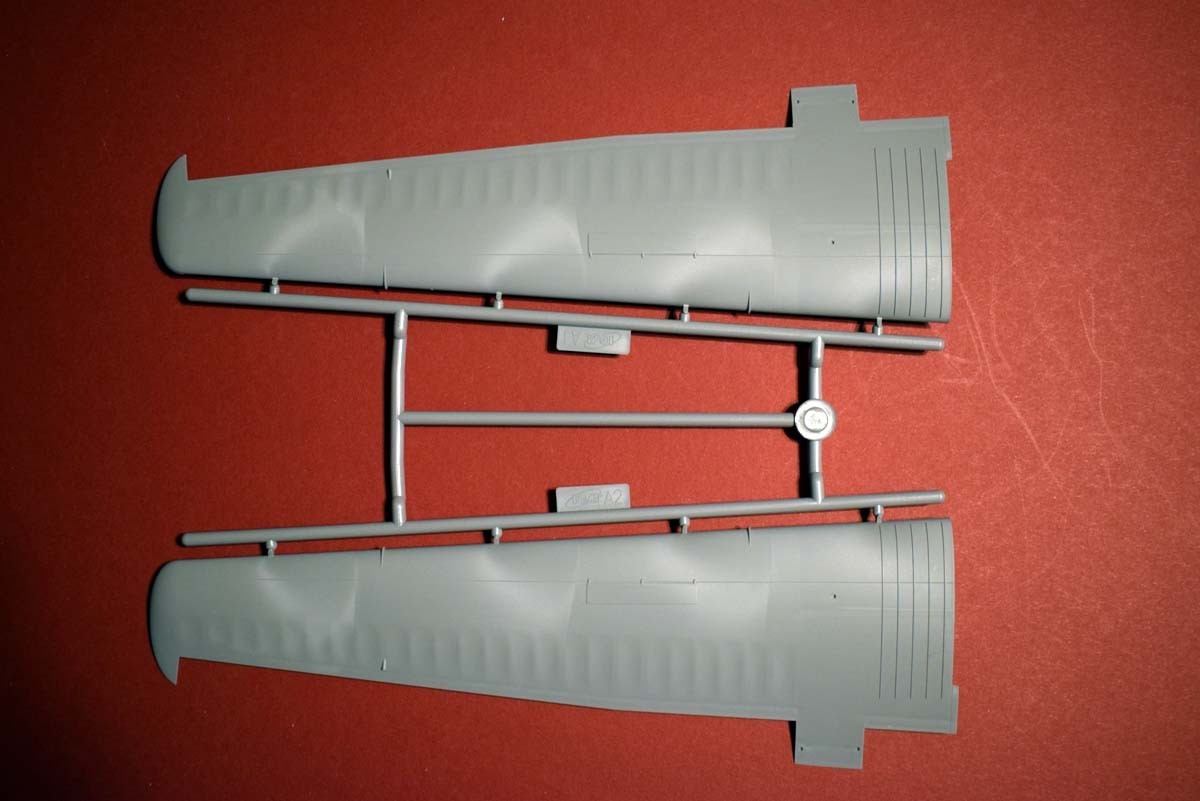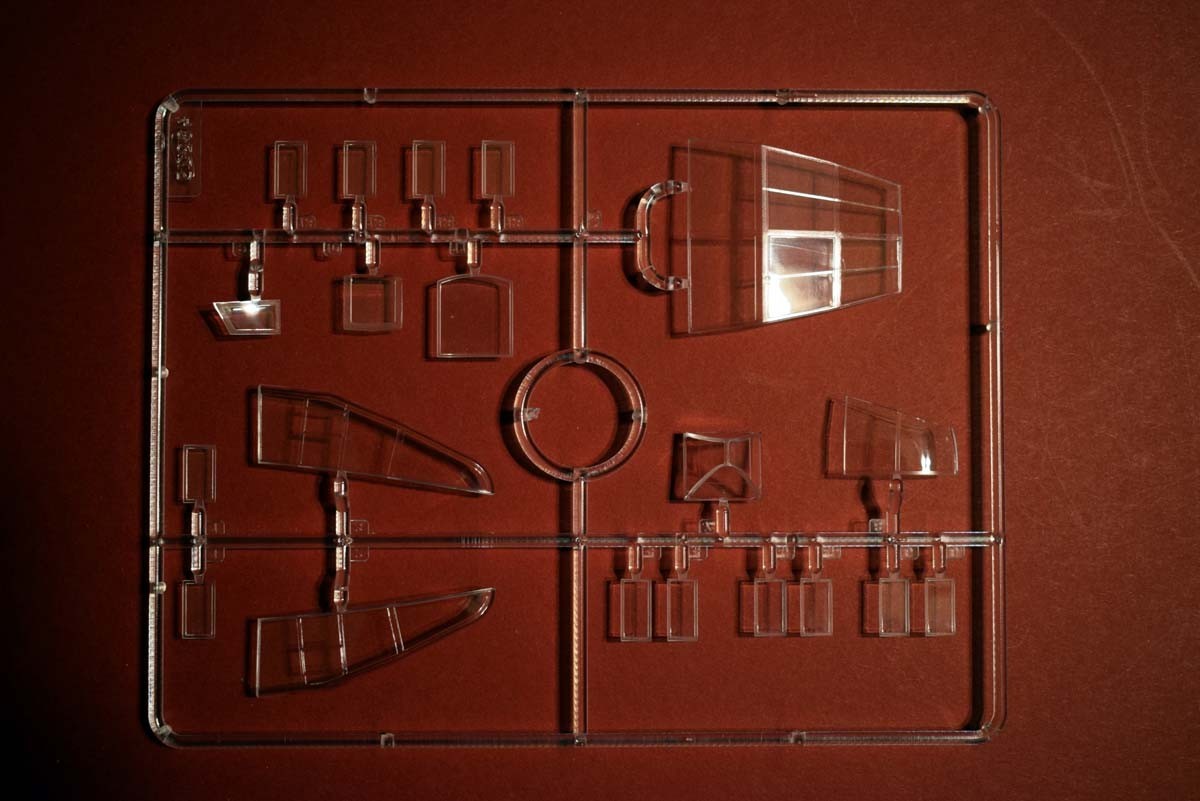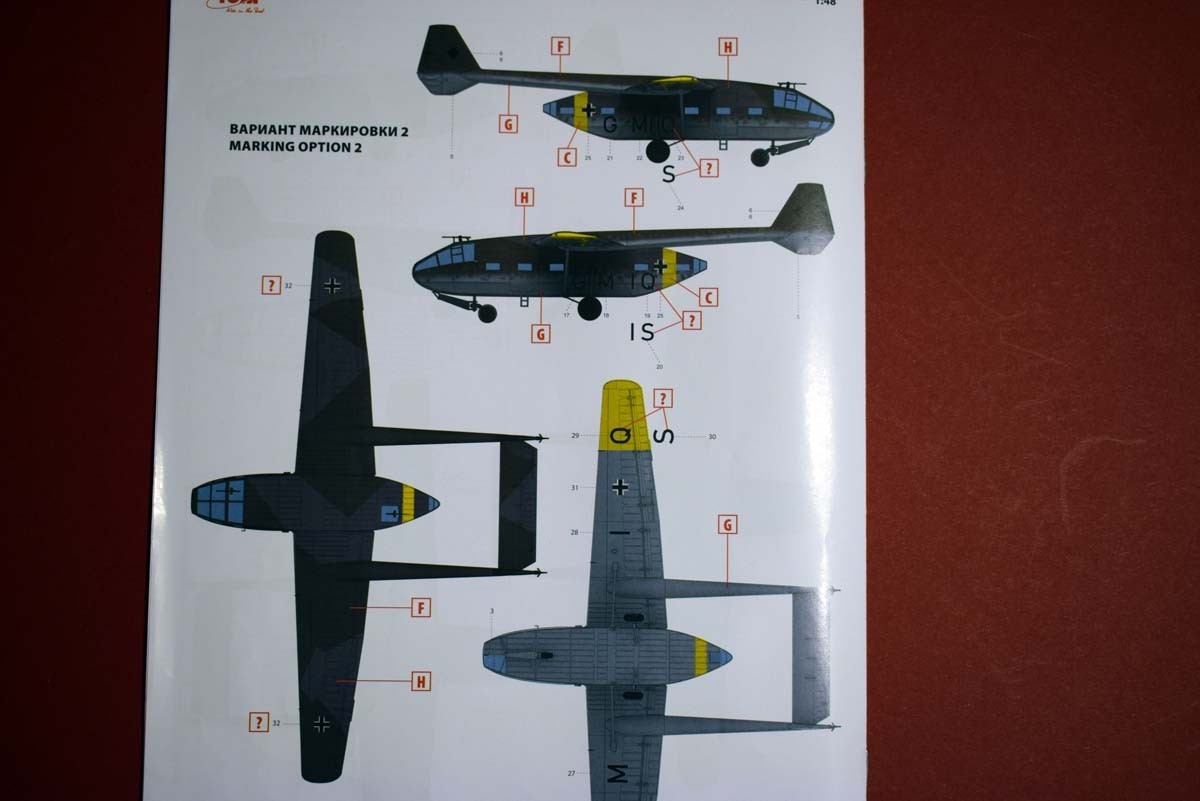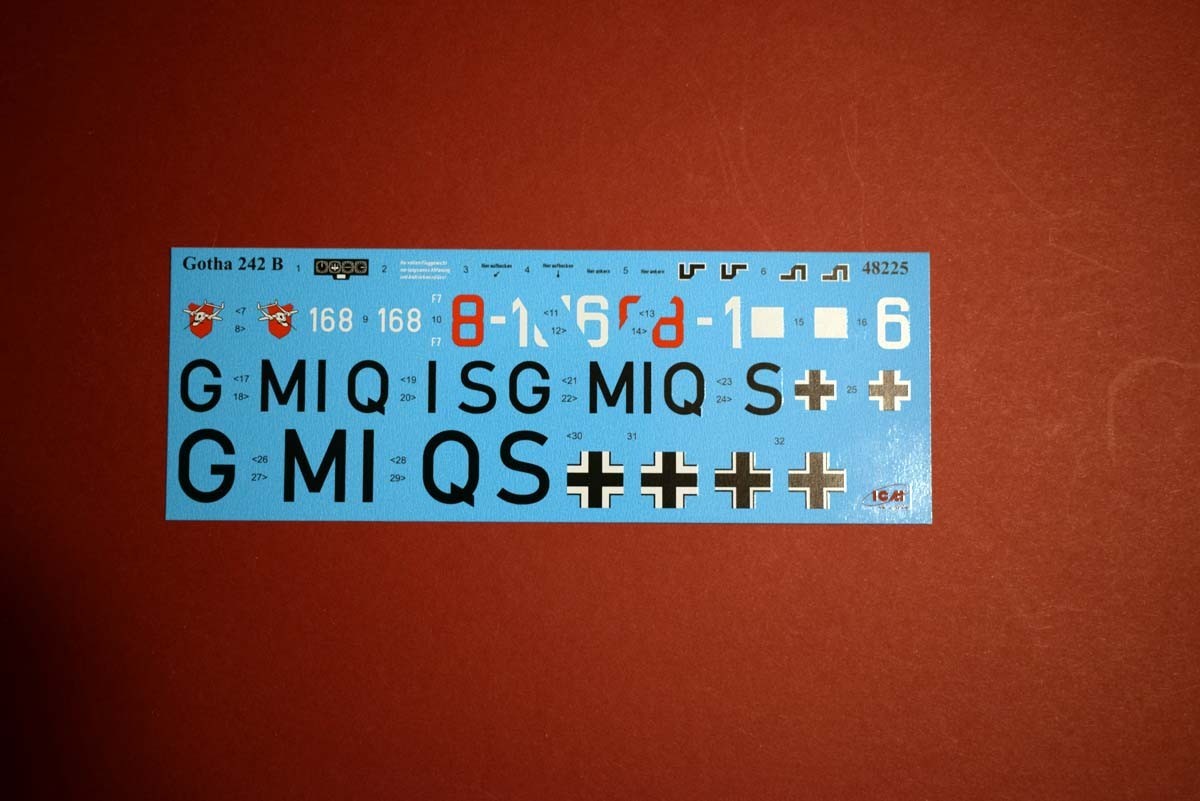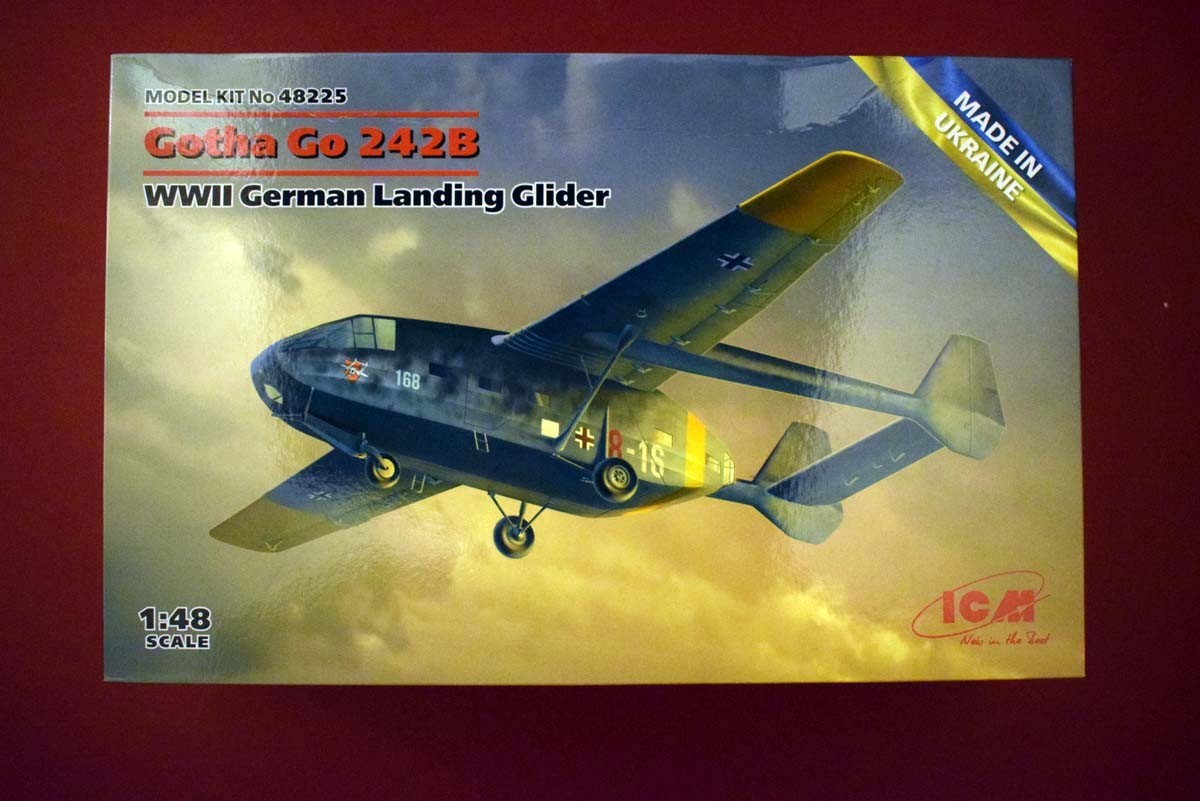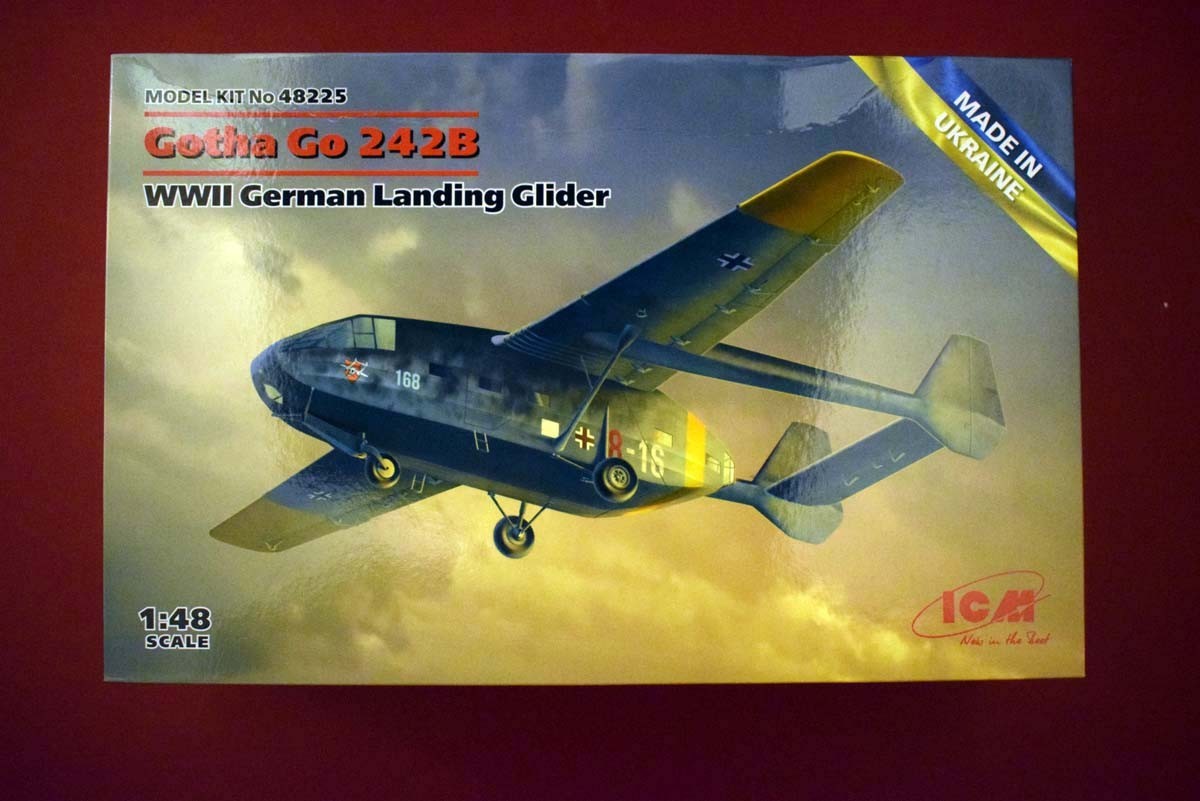
Introduction
The following introduction is as supplied by ICM:
After successful amphibious operations in the early days of World War II, The Luftwaffe decided to develop amphibious transport gliders with increased capacity and payload. One of them was the Go 242 glider designed by Gotha. It could carry 21 paratroopers, or 2400kgs of cargo, and its spacious cargo compartment could also carry a light off road vehicle or an artillery gun. For their capacity and also for the distinctive hull shape they were nicknamed “Flying containers”. The defensive armament of the gliders consisted of 3-4 MG 15 machine guns. They were used in various sectors of the front line to transport personal and supplies for the encircled German troops. In 1942 the production of the gliders with the index (B) in several modifications, with non-retractable wheeled landing gear began and the rear pair of wheels. Later some of the gliders were converted into transport aircraft.
(where they refer to amphibious operations, I presume they mean airborne)
Review
This offering from ICM is one of the first new releases following the start of the war with the Russian Federation. The model is supplied in a flip top cardboard tray, with an additional card lid showing the artwork for the release. Inside of the box there are two plastic bags containing all of the parts for the model, and one of these also contains an additional bag with the clear elements in it. The instruction booklet is loose in the box, with the decals sheep protected between the pages. An examination of the parts reveals nothing of concern, other than some flow lines in the plastic which have not caused any defamation to the surfaces.
The internal areas of this release have a good amount of detail present in terms of a sizable quantity of the tubular frame structure of the glider, which gave the aircraft its rigidity. Seats for the Paratroopers are provided with a nice level of detail, but some aftermarket products or scratch work will be needed to replicate the belts for the seats. I am quite pleased to find a brace across the width of the fuselage to support the wings after addition. There is a good quantity of additional internal structure replicated on the inner face of the fuselage panels, but I have located some ejector pin marks that will need to be addressed. The cockpit is fairly simplistic in its design, offering the foot controls, control sticks and pilots seats. A reasonable level of detail has been provided in the pilots seats, but again harness detail has been omitted. The minimal number of instruments, and unusual placement design has been well replicated. It has been missed in the instruction booklet, but ICM has supplied decals for the flight instruments so you will need to remember to add them yourself.
The external features of the model have been very nicely tackled, with a good cloth appearance on the fuselage surface. The rib detail has also been well detailed and should please the modeller. There is a hole that needs to be made in a portion of the fuselage and I am pleased to see that ICM has provided the location and size of the drill bit needed. The flight surfaces and controls exhibit the same nice level of detail as the fuselage, and again dependant on the join should look good. The rear loading area with the lift up tail has been replicated with its bracing, and internal and external detail and can be used on the model either open or closed. The booms of the tail supports, which I believe are metal are well detailed but may need some filling to hide the seam along the centres. The physical tail and fins exhibit the same nice detail as the fuselage.
The various control linkages and hinges that are between the wings and flight controls have been supplied separately and should add a nice level of detail on the finished model. The defensive machine guns which are both mounted on the top with one facing aft and one forward. The clear portions of the model meet my requirements and I was again pleased to find that ICM has provided a pattern for cutting masks for all the clear areas of the model. ICM has also gone to the trouble of supplying four ways drawings to guide the modeller in placement of the masks.
This release from ICM has been provided with two finishing options which are as follows:
Gotha Go 242 B-2, Schleppgruppe 4, 1943
Gotha Go 242 B-2, Germany, 1942
The decal sheets itself has reasonable quality decals provided, with me only just being able to feel them on the paper. Something provided on the decal sheet, but not shown for placement on the model are Swastika's which means that you do not need to source externally. Also released with this model in an ICM paint set which provides five colours, plus a satin varnish. The six pots each hold 12mls of paint. The paint used is acrylic in nature, and so should be relatively easy to use. The colours in the set are as follows:
Pale Blue
Dark Sea Grey
Deep Yellow
German Field Grey
Grey-Green
Satin Varnish
Conclusion
This offering from ICM despite the difficulties they are currently suffering is of a quality I have come to expect from ICM. Nothing jumps out at me, as having suffered due to the war and I only have one major critique which is the lack of harness details on all of the seats that really should be present. A designated paint set is a nice offering for those with limited paint stocks or preferred manufacturer.

